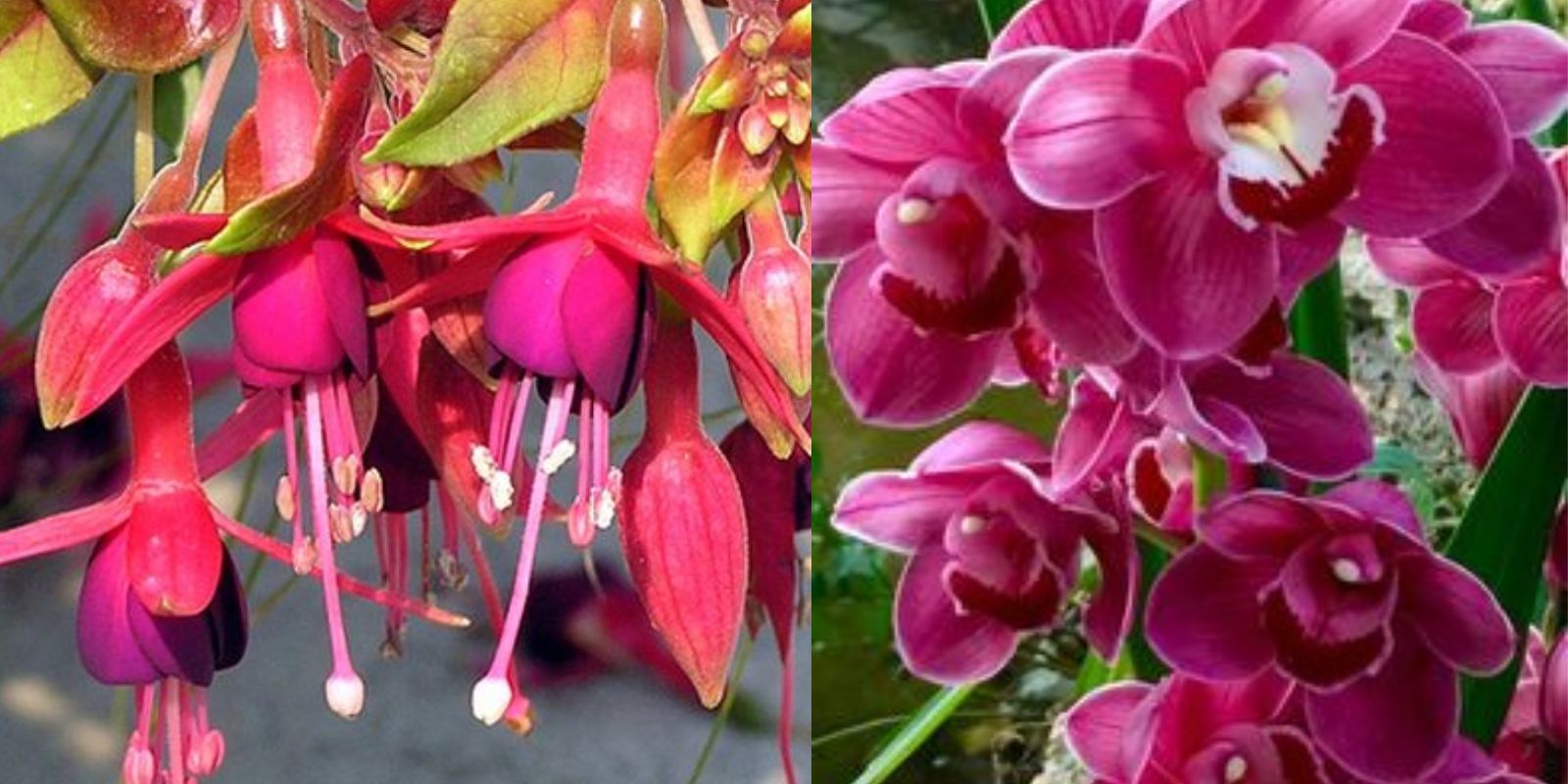Introduction: The Enchanting World of Fuchsias
Fuchsia (Fuchsia hybrida) is a beloved flowering plant cherished for its graceful, pendulous flowers that come in a stunning array of colors. From vibrant pinks and purples to delicate whites and reds, fuchsias captivate gardeners with their elegant appearance and prolific blooming habits. Whether cascading from hanging baskets, adorning garden borders, or showcased in containers, fuchsias bring a touch of charm and beauty to any outdoor space. This article explores the fascinating realm of fuchsia cultivation, offering insights, tips, and practical advice to help you successfully grow and care for these enchanting plants.
1. Understanding Fuchsias: A Botanical Overview
Fuchsias belong to the genus Fuchsia, which includes over 100 species and numerous hybrids. Originating from Central and South America, as well as New Zealand and Tahiti, fuchsias have adapted to various climates worldwide, thriving particularly in temperate regions. These versatile plants are known for their distinctive flowers, which feature four long, slender sepals and four shorter petals, often in contrasting colors. Fuchsia hybrids combine traits from different species, resulting in a wide diversity of flower forms and colors.
2. Selecting the Right Variety of Fuchsia
Choosing the right variety of fuchsia is crucial to ensuring success in cultivation. Consider the following factors when selecting fuchsias for your garden:
- Climate Compatibility: Determine whether the fuchsia variety is suitable for your climate zone, as some varieties prefer cooler temperatures while others tolerate heat more effectively.
- Growing Conditions: Assess the available growing conditions in your garden, such as sun exposure (partial shade to filtered sunlight is ideal for most fuchsias), soil type (well-draining soil enriched with organic matter), and moisture levels.
- Usage: Decide how you plan to use fuchsias—whether as hanging basket plants, container specimens, or garden borders—to guide your selection of compact, trailing, or upright varieties.
3. Essential Steps for Growing Fuchsias
To cultivate healthy and vibrant fuchsias, follow these essential steps:
a. Planting Fuchsias:
- Timing: Plant fuchsias in early spring after the risk of frost has passed, or in late summer for fall blooms.
- Location: Choose a location with partial shade to protect fuchsias from intense afternoon sun, which can scorch their delicate foliage.
- Soil Preparation: Prepare well-draining soil by incorporating compost or organic matter to improve fertility and drainage. Fuchsias thrive in soil with a slightly acidic pH.
- Planting Depth: Dig a hole slightly larger than the root ball of the fuchsia plant. Place the plant in the hole so that the top of the root ball is level with the soil surface. Backfill with soil and gently firm around the plant.
b. Watering and Moisture Management:
- Watering Frequency: Keep the soil consistently moist but not waterlogged. Water deeply, especially during dry periods, and allow the soil to dry out slightly between waterings.
- Mulching: Apply a layer of organic mulch around the base of the plant to retain moisture, regulate soil temperature, and suppress weed growth.
c. Fertilizing Fuchsias:
- Fertilizer Requirements: Feed fuchsias regularly during the growing season with a balanced fertilizer formulated for flowering plants. Apply fertilizer every 2-4 weeks according to package instructions to promote healthy growth and prolific blooming.
- Avoid Over-Fertilizing: Avoid excessive fertilization, which can lead to lush foliage at the expense of flowers. Use a diluted solution to prevent fertilizer burn and monitor plant response.
d. Pruning and Maintenance:
- Pruning Practices: Prune fuchsias in early spring to remove dead or weak growth, promote bushy growth, and encourage continuous flowering throughout the season.
- Deadheading: Remove spent flowers promptly to stimulate new blooms and maintain a tidy appearance.
4. Special Care Considerations
- Pest and Disease Management: Monitor fuchsias regularly for common pests such as aphids, spider mites, and whiteflies. Treat infestations promptly with insecticidal soap or neem oil to prevent damage to foliage and flowers.
- Disease Prevention: Ensure good air circulation around plants to reduce the risk of fungal diseases. Avoid overhead watering, which can promote fungal growth on foliage.
- Winter Protection: In colder climates, protect fuchsias from frost by bringing containers indoors or covering plants with a frost cloth. Prune back plants in late fall to remove dead or frost-damaged growth and prepare them for dormancy.
5. Enjoying the Rewards of Fuchsia Cultivation
- Blooming Season: Celebrate the vibrant blooms of fuchsias, which typically begin in late spring and continue through fall, depending on the variety and growing conditions.
- Landscape Versatility: Explore various ways to incorporate fuchsias into your landscape, from hanging baskets on porches and patios to mixed borders and container gardens.
- Sharing Experiences: Connect with fellow gardeners and fuchsia enthusiasts to exchange tips, share success stories, and celebrate the beauty of these versatile plants.
Motivation to Interact:
Embark on a journey into the enchanting world of fuchsias and join a community of gardeners passionate about cultivating these captivating plants. Whether you’re a beginner seeking guidance or an experienced gardener eager to expand your collection, exploring the nuances of fuchsia cultivation promises to enrich your gardening experience. Let’s cultivate vibrant gardens together and celebrate the timeless allure of fuchsias in our outdoor spaces!

